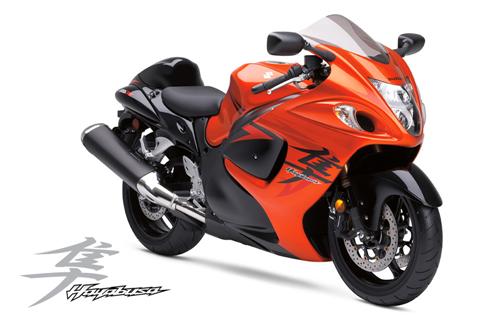
The American Motorcyclist Association (AMA) has serious reservations about the conclusions reached in a report of motorcycle fatalities released by the Insurance Institute for Highway Safety (IIHS) this past week. The IIHS report purports to show that sport-styled motorcycles are considerably more dangerous than other types of bikes. But an AMA analysis of the report notes that the methodology used in the research makes it difficult to determine whether thats a valid conclusion.
“The synopsis released by the IIHS claims that it has data showing a much higher fatality rate among so-called supersport motorcycles,” noted Ed Moreland, AMA Vice President for Government Relations. “But that is by no means clear, based on this report.”
The IIHS report is not a new study. Instead, its an analysis of existing data from the national Fatal Accident Reporting System. The methodology consists of a comparison of fatalities for different styles of motorcycles based on a rate per 10,000 registrations. But that approach ignores a number of key factors, like the number of miles the bike was ridden, the traffic environment in which it was used, along with the age and experience of the rider, among others.
“Those factors are so significant that they could easily change the results the IIHS has reported,” said Moreland. “For instance, the IIHS has made no attempt to determine whether bikes in its supersport category are ridden more miles than bikes in the cruiser/standard category. Nor has it attempted to determine whether they are used more often in urban areas that represent a more dangerous environment than the rural interstates where touring bikes are likely to be used.”
When it comes to age and riding experience, the IIHS does indicate that motorcycles in its “supersport” category are ridden by the youngest riders, averaging 27 years of age. In fact, its rankings of the average ages of riders killed on various styles of bikes coincides closely with the fatality rate it reports on that style of motorcycle.
“In other words,” said Moreland, “its entirely possible this report actually demonstrates that younger, less-experienced riders are more prone to crash than older riders, regardless of the type of bike theyre riding. And thats true for all types of motor vehicles cars, trucks or motorcycles.”
Making any interpretation of the IIHS report even more difficult is the classification system the group used in dividing motorcycles. It includes some unfamiliar categories, like “unclad sport” motorcycles, and leaves out well-established categories, like the sport-touring class.
In an attempt to sort through this confusion, the AMA requested a copy of the classification system the IIHS used in its analysis and found several significant anomalies. For instance, although the IIHS report focuses on speed and acceleration as the factors that make its “supersport” category so dangerous, the two most powerful motorcycles you can buy in the United States, Kawasakis ZX-14 and Suzukis Hayabusa, are placed in the Sport category, which is rated considerably less dangerous. And they share that category with Hondas ST1300 and Yamahas FJR1300, two bikes that define the sport-touring class.

“No matter what name you put on it, the Hayabusa and the ST1300 are simply not in the same class of motorcycles,” Moreland said. “And if youre claiming to rank fatality rates by category of motorcycle, its hard to get meaningful results when you lump those very different machines together and declare them to be in the same class.”

The timing of the IIHS report is also unusual. Just last week, the National Transportation Safety Board specifically asked the Federal Highway Administration to work with states to develop uniform data-collection procedures that will result in better information about the number of miles traveled by motorcycles, one of the most important factors in evaluating crash statistics. As a result, this could be one of the final reports to use registration data exclusively, which is less accurate in reflecting actual motorcycle use.
This new IIHS report is remarkably similar to a study the group financed 20 years ago that also purported to show higher fatality rates among sportbikes. At that time, the IIHS used its study as the springboard for a well-orchestrated campaign that included ready-made news footage it fed to TV news operations across the country. That campaign culminated in the introduction of a bill in the U.S. Senate to impose a horsepower limit on all motorcycles sold in the U.S.
Historical Perspective
The current IIHS research has plenty of echoes of that era in the late 1980s. In fact, the final sentence of the IIHS “Status Report” on the subject, published Sept. 11, says, “Short of banning supersport and sport motorcycles from public roadways, capping the speed of these street-legal racing machines at the factory might be one way to reduce their risk.”
In response to that previous attempt by the IIHS to ban sportbikes, the AMA conducted an analysis of the study and raised questions that the Association submitted to Harry Hurt, lead researcher on the most comprehensive study of motorcycle crashes ever conducted. Hurt reviewed the research and declared it “fatally flawed” for exactly the kind of methodology problems seen in the new IIHS report. The Association then coordinated a campaign among motorcyclists across the country that eventually led the senator to withdraw his proposed legislation.
Ironically, the new IIHS report comes out just as the AMA and the motorcycling community have been successful in getting federal funding for the first comprehensive motorcycle safety study since the Hurt Report all those years ago. And thanks to funding from the industry, through the Motorcycle Safety Council, along with the AMA and individual riders, that study will begin this fall.”We look forward to getting the results of actual, in-the-field research that wont just compare fatalities to some hypothetical class of motorcycle, but will pin down the actual factors involved in motorcycle crashes,” Moreland said. “That will be much more useful in helping save lives on the highway.”
